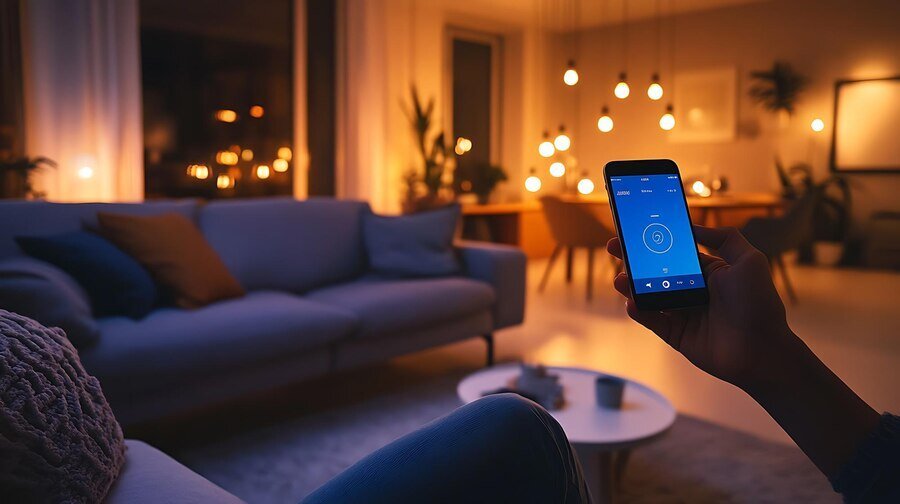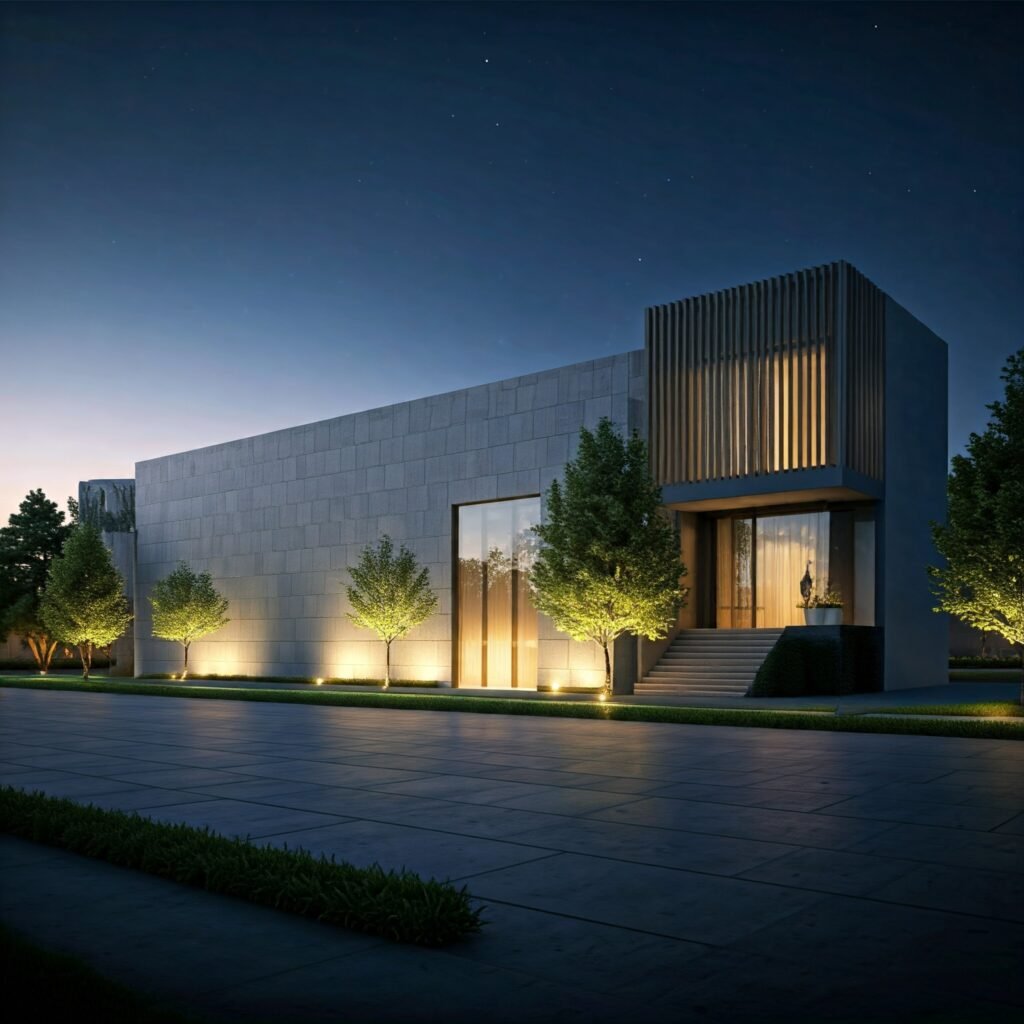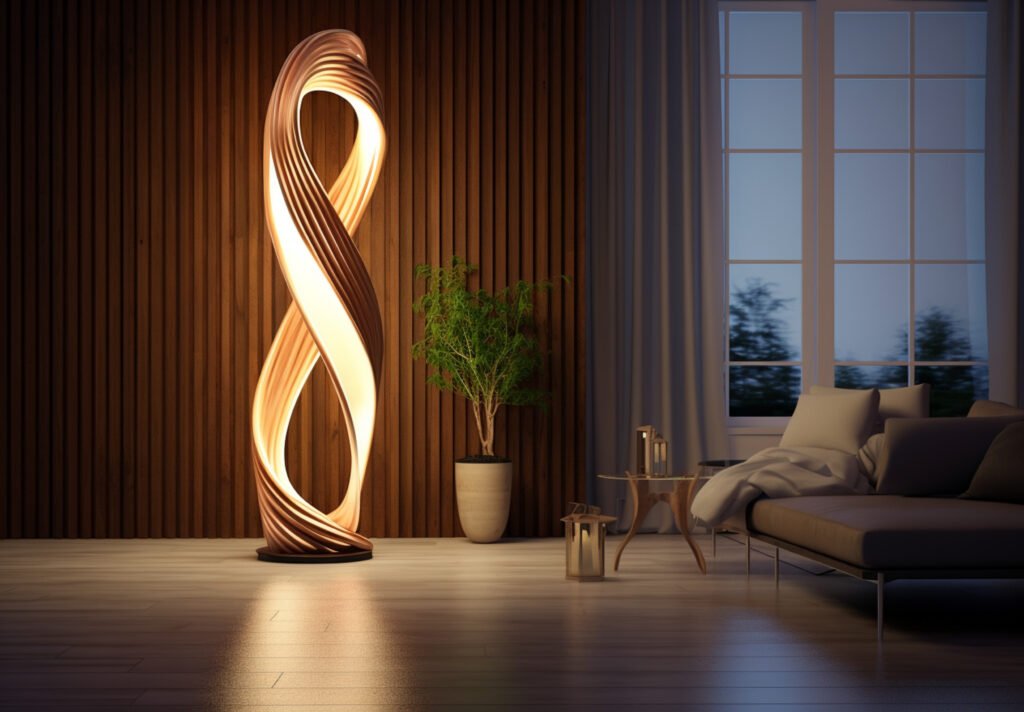
In the era of technological advancements, integrating smart lighting for architecture & landscape designs has emerged as a game-changer. Smart lighting for architecture & landscape designs not only enhances the aesthetic appeal and functionality of spaces but also brings added convenience and energy efficiency. This comprehensive guide explores how smart lighting for architecture & landscape designs can be seamlessly integrated into both architectural and landscape designs, highlighting its benefits, applications, and future trends.
Table of Contents
What is Smart Lighting?

What is Smart Lighting?
Smart lighting for architecture & landscape designs encompasses advanced lighting systems that offer enhanced control and flexibility compared to traditional lighting. These systems typically use LED technology combined with connectivity features such as Wi-Fi, Bluetooth, and IoT integration. Smart lighting for architecture & landscape design solutions can be controlled remotely through apps, voice commands, or automated schedules, allowing users to adjust brightness, color, and timing with ease.
Benefits
Enhanced Control and Customization
Smart lighting for architecture & landscape designs provides unprecedented control over the lighting environment. With the ability to adjust brightness levels and color temperatures, architects and designers can create dynamic lighting schemes that enhance the building’s features. For example, adjustable lighting can highlight architectural details such as columns, arches, or textures, while changing color temperatures can set different moods for various times of the day or special occasions.
Improved Energy Efficiency
One of the standout benefits of smart lighting for architecture & landscape design is its energy efficiency. Traditional lighting systems can be wasteful, consuming more energy than necessary. In contrast, smart lighting for architecture & landscape design systems uses LED bulbs and incorporates features like motion sensors, timers, and dimmers. These features help reduce energy consumption by ensuring that lights are only on when needed and at optimal brightness levels, leading to lower electricity bills and a smaller carbon footprint.
Seamless Integration with Home Automation
Smart lighting for architecture & landscape design systems can be integrated with other home automation technologies, creating a cohesive smart home environment. For instance, smart lighting for architecture & landscape designs can be synchronized with heating and cooling systems, security systems, and entertainment setups. This integration allows for automated lighting adjustments based on occupancy, time of day, or even weather conditions, enhancing overall convenience and efficiency.
Applications of Smart Lighting for Architecture & Landscape Designs

Highlighting Architectural Features
Smart lighting for architecture & landscape designs can be used effectively to accentuate architectural features, making them stand out and adding depth to the design. For example, uplighting can be used to illuminate building facades, highlighting textures and details. Similarly, downlighting can focus on specific architectural elements like statues or columns, creating striking visual effects. The flexibility of smart lighting for architecture & landscape designs allows designers to experiment with different lighting angles, intensities, and colors to achieve the desired impact.
Creating Dynamic Lighting Scenes
Dynamic lighting scenes are a key feature of smart lighting for architecture & landscape design systems. These scenes can be pre-programmed or adjusted manually to suit different occasions or needs. For instance, a sophisticated lighting scene for a formal event can be created with a combination of soft, warm lights and accent colors. Conversely, a vibrant lighting scene for a social gathering can include bright, colorful lights that create an energetic atmosphere. The ability to easily switch between different scenes enhances the functionality and versatility of architectural spaces.
Enhancing Building Security
Smart lighting for architecture & landscape designs plays a crucial role in improving building security. Automated lighting systems can simulate occupancy by turning lights on and off at various times, deterring potential intruders. Additionally, smart lighting for architecture & landscape designs can be integrated with security cameras and motion sensors. When motion is detected, the lighting can automatically illuminate the area, providing better visibility and improving security.
Advantages of Smart Lighting for Architecture & Landscape Designs+

Improved Aesthetics and Ambiance
In landscape design, smart lighting for architecture & landscape designs can dramatically enhance the visual appeal and ambiance of outdoor spaces. Whether it’s a garden, patio, or pathway, smart lighting for architecture & landscape designs allows for creative lighting solutions that highlight landscape features and create inviting environments. Adjustable color temperatures and customizable lighting patterns enable designers to craft unique visual effects that adapt to different seasons and occasions.
Increased Safety and Navigation
Outdoor spaces often require thoughtful lighting to ensure safety and ease of navigation. Smart lighting for architecture & landscape design systems equipped with motion sensors can automatically light up pathways, stairs, and other high-traffic areas as people approach. This feature not only prevents accidents but also improves overall safety during nighttime hours. Additionally, programmable lighting can ensure that dark spots are illuminated consistently, enhancing the functionality of outdoor spaces.
Energy Savings and Sustainability
Smart lighting for architecture & landscape design systems contributes to sustainability by promoting energy efficiency. LED technology, combined with features such as timers and motion sensors, reduces energy consumption and minimizes environmental impact. Solar-powered smart lighting for architecture & landscape designs offers an eco-friendly alternative for outdoor lighting, harnessing renewable energy and reducing reliance on traditional power sources. By incorporating these energy-efficient solutions, landscape designers can create sustainable and environmentally responsible outdoor spaces.
Key Considerations for Integrating Smart Lighting for Architecture & Landscape Designs
Compatibility and Integration

When incorporating smart lighting for architecture & landscape designs, compatibility with existing systems and infrastructure is crucial. It’s important to choose lighting products that can seamlessly integrate with other smart home technologies or automation platforms. Compatibility with popular smart home ecosystems, such as Google Home or Amazon Alexa, can provide additional control options and enhance user experience. Ensuring that the smart lighting for architecture & landscape design systems aligns with the overall design and functionality of the space is essential for a successful integration.
Design and Aesthetics

The design and aesthetics of smart lighting for architecture & landscape designs are important considerations in both architectural and landscape projects. Lighting fixtures should complement the overall design of the space, blending harmoniously with other elements. In architectural designs, smart lighting for architecture & landscape designs should enhance the building’s features without overpowering the design. In landscape designs, the lighting should highlight key features while maintaining a cohesive and visually appealing outdoor environment. Careful selection of lighting fixtures, colors, and patterns can enhance the overall aesthetic and functionality of the space.
Installation and Maintenance

Proper installation and maintenance are key to ensuring the longevity and performance of smart lighting for architecture & landscape design systems. Working with experienced professionals for installation can help avoid potential issues and ensure that all components are set up correctly. Regular maintenance, including checking for updates and addressing any technical issues, is essential for keeping the lighting system in optimal condition. Additionally, understanding the maintenance requirements of different smart lighting for architecture & landscape design products can help in managing and troubleshooting any issues that arise.
Future Trends in Smart Lighting for Architecture & Landscape Designs
Increased Use of AI and Machine Learning
The future of smart lighting for architecture & landscape designs is likely to see increased integration of artificial intelligence (AI) and machine learning technologies. These advancements will enable lighting systems to learn user preferences, adapt to changing environments, and provide more personalized lighting experiences. AI-powered smart lighting for architecture & landscape design systems may offer enhanced automation, predictive adjustments, and advanced control features that further enhance the user experience.
Expansion of IoT Integration
As the Internet of Things (IoT) continues to evolve, smart lighting for architecture & landscape design systems will become even more interconnected with other smart devices. This expanded integration will allow for more sophisticated automation and control, creating a seamless and intelligent lighting environment. IoT integration can facilitate communication between lighting systems, security devices, climate controls, and other smart home technologies, resulting in a more cohesive and efficient smart home experience.
Focus on Sustainability
Sustainability will remain a key focus in the development of smart lighting for architecture & landscape design technologies. Innovations in energy-efficient lighting, use of renewable energy sources, and eco-friendly materials will drive the future of smart lighting for architecture & landscape designs. As environmental concerns grow, smart lighting for architecture & landscape design solutions that prioritize sustainability will become increasingly important. This includes advancements in solar-powered lighting, recycling of materials, and reduction of waste associated with lighting products.
Conclusion
Integrating smart lighting for architecture & landscape designs offers numerous benefits, from enhanced control and energy efficiency to improved aesthetics and functionality. By leveraging advanced features and technologies, designers and homeowners can create dynamic, versatile, and sustainable lighting solutions that transform spaces and elevate user experiences. As technology continues to advance, the possibilities for smart lighting for architecture & landscape designs are limitless, promising exciting opportunities for innovation in both indoor and outdoor environments.




